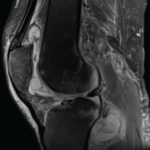After 231 passages in subcultures over a span of 13 years, experiments in guinea pigs demonstrated that the previously virulent M. bovis had become attenuated to a nonvirulent form. Bacille Calmette-Guerin or BCG, named in honor of the researchers, was administered orally to a baby whose mother had died of TB and whose grandmother was dying of the disease. The baby had no side effects from the vaccine and did not contract TB.
In the next test of BCG, 217 Parisian children were vaccinated and successfully immunized against the disease. The Pasteur Institute began to mass produce the vaccine and distributed it to numerous manufacturers around the world as a way of perpetuating the cultures over time. However, there were some setbacks, including a disaster in Lübeck, Germany, when more than half of a group of 250 children contracted TB and 73 died following vaccination with an unexpectedly virulent strain. Yet BCG vaccination has saved countless lives. As the sole vaccine available for the prevention of the morbidity and mortality due to TB, it is unquestionably one of the greatest public health tools ever invented.
The BCG story does not end here. An interesting observation first made about 90 years ago provided the impetus for another line of inquiry, namely the interaction between infections, immunity and cancer. The results of an autopsy study performed at the Johns Hopkins Hospital in Baltimore demonstrated a lower frequency of cancer in patients with TB.9 This observation became a clinical teaching pearl though the lack of effective therapy for either cancer or TB limited its usefulness.
Decades later, the notion of a link between infection and cancer was further bolstered by a series of landmark studies performed by Lloyd Old, MD, and colleagues at the Sloan-Kettering Institute in New York, who demonstrated that mice infected with BCG showed an increased resistance to challenge with transplantable tumors.10 The action of BCG was indirect and mediated via the activation of macrophages that had the capacity to inhibit or destroy cancer cells and induce hemorrhagic necrosis in mouse tumors. This line of inquiry expanded over time and subsequent work from Dr. Old’s lab confirmed the pivotal role of TNF in this triad of infection, immunity and cancer.11
Based on this idea that certain infections may turn on immune pathways critical in cancer prevention, BCG was investigated as a possible form of cancer immunotherapy. Although initially hailed by some as a cancer treatment breakthrough, BCG failed to live up to its early promises, with one notable exception. In bladder cancer, it remains a viable therapeutic option for some patients where instillation of BCG into the bladder appears to be quite effective in halting disease progression. 7 More importantly, this concept was germane to our understanding of tumor targeting through the unleashing of the host’s immune system with the use of the new programmed death (PD-1) checkpoint inhibitor drugs.


